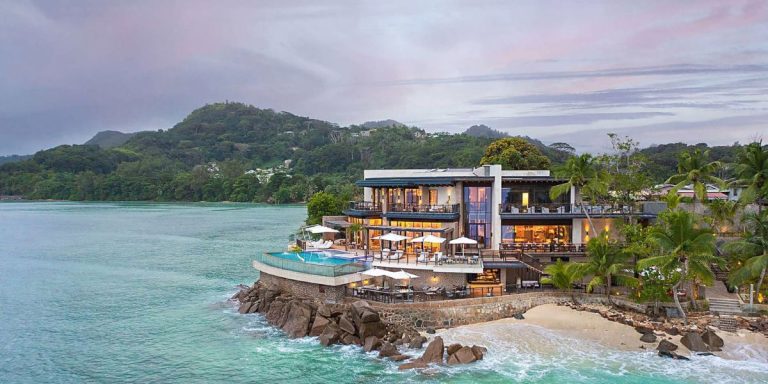Africa is a rapidly developing continent, home to some of the fastest-growing economies in the world.
While many nations still face economic challenges, several have built decent wealth, with industries ranging from oil and gas to technology and agriculture. Despite inflation and concerns around debt, Africa’s economic future looks strong, with major economies continuing to grow and expand.
According to Statista, the 10 richest country in Africa had a combined gross domestic product (GDP) of £1.9 trillion ($1.95 trillion) in 2024.

As of 2025, the wealth of African countries can be assessed using two primary metrics: gross domestic product (GDP) per capita and total nominal GDP. GDP per capita is simply the average amount of money each person in a country would have if the total GDP were shared equally among the population, while total nominal GDP is the total value of all goods and services a country produces in a year, measured in current market prices without adjusting for inflation. Each metric offers a different perspective on economic prosperity.
Here are the three richest country in Africa based on the nominal GDP:
South Africa – $373 billion
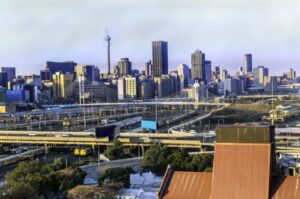
South Africa is one of Africa’s top economies, boasting a diverse industrial base. Traditionally strong in mining, it leads the world in platinum, chromium, and manganese production. This is complemented by a well-developed manufacturing sector, particularly in automotive and machinery.

Agriculture also plays a key role, with the country renowned for its wine production. Additionally, financial services and tourism, including ecotourism, have been major contributors to economic growth.
Despite political challenges impacting progress, South Africa remains a key economic force and an attractive investment hub in Africa. However, since 2007, persistent power shortages have posed a significant constraint on economic growth. Its total nominal GDP is $373 billion.
South Africa is a top travel destination with stunning landscapes, rich wildlife, and vibrant cities. Some places are Cape Town & Table Mountain, Kruger National Park, The Garden Route, Addo Elephant National Park and so on.
Check out some places to visit in South Africa below:
Egypt -$347.6 billion
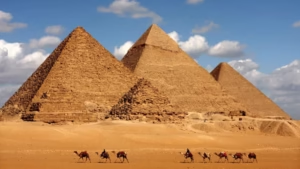
Egypt is one of Africa’s largest economies, with a total nominal GDP of approximately $347.6 billion. A major contributor to GDP, Egypt attracts millions of visitors yearly to its historic sites like the Pyramids of Giza, Luxor, and the Red Sea resorts.
The fertile Nile Valley supports key crops such as cotton, wheat, and rice, making agriculture a significant sector. Egypt has a strong textile, steel, and cement industry, as well as a growing automobile assembly sector.
The country is a leading gas producer in Africa, with large reserves in the Mediterranean and the Nile Delta. It also exports oil and petroleum products.

As a key global trade route, the Suez Canal generates billions of dollars annually, boosting Egypt’s GDP. Cairo has a growing fintech and IT sector, with an increasing number of startups and investments in digital transformation.
Watch the video below:
Nigeria – $250 billion
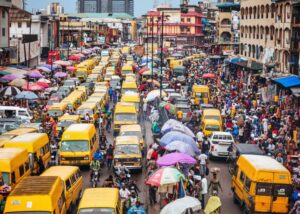
Nigeria is considered the richest country in Africa largely due to its high GDP, driven by its vast oil reserves (which account for a major part of its revenue), agricultural output, and rapidly growing tech sector. Additionally, Nigeria’s large population — the largest in Africa, at over 230 million people—fuels a substantial domestic market and workforce, contributing to growth in sectors like manufacturing, telecommunications, and services.
Nigeria is a country rich in culture, history, and natural beauty. Some of the best places to visit in Nigeria include, Zuma Rock, Osun-Osogbo Sacred Grove, Badagry Slave Route Museum and so on.
Watch the video below:

Here are the top 10 richest country in Africa in 2025 based on GDP per capita:
1. Seychelles – $21,875 (GDP per Capita)
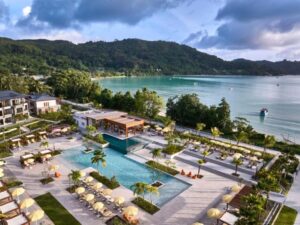
Seychelles, an island nation in the Indian Ocean, holds the highest GDP per capita on the list. Its economy is primarily driven by tourism, with a strong emphasis on luxury experiences, alongside a thriving fisheries sector. Additionally, the country has a growing financial services industry, particularly in offshore banking.
Political stability and strategic economic policies have played a key role in Seychelles’ financial success since gaining independence in 1976. Like South Africa, Mauritius, and Kenya, Seychelles also offers digital nomad visas for skilled remote workers.
Check out the beautiful places to visit in Seychelles below:
2. Mauritius – $10,256 (GDP per capita)
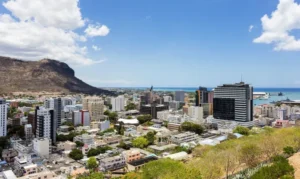
Mauritius, a subtropical island African nation, has transitioned from a low-income, agriculture-based economy to an upper-middle-income country with a diverse economic base. Mauritius has strategically expanded beyond its traditional sectors like sugarcane and textiles. Its key industries include tourism, textiles, and financial services.
The government’s focus on ICT and education has boosted innovation, attracting international investment. Currently, tourism accounts for over 72% of the country’s GDP.
Check out beautiful tourist attraction in Mauritius below:

3. Gabon – $8,831 (GDP per capital)
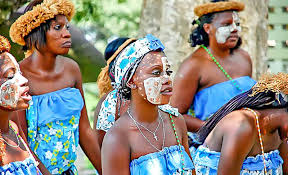
According to the World Bank, more than 80% of Gabon’s population lives in urban areas, making it one of the most urbanised nations in Africa. Most of its wealth comes largely from oil, supported by a rich reserve of manganese. Thanks to the country’s lush rainforests, timber and forestry also contribute to the economy.
Though relatively small, Gabon’s agricultural sector is gaining traction as part of efforts to diversify away from resource-based revenue and focus on sustainable practices and local food production. Amid its vast natural resources, approximately one in three citizens lives in poverty, underscoring an ongoing economic problem.
4. Equitorial Guinea – $7,066 (GDP per capita)
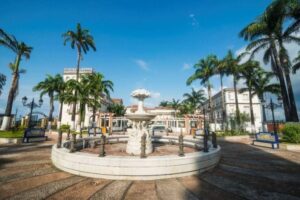
Equatorial Guinea’s economy relies heavily on its oil reserves, which it discovered in the 1990s, making it the third-largest oil producer in Sub-Saharan Africa and one of the highest-income countries in Africa.
Despite its wealth, income inequality remains a challenge. In the past, government corruption and mismanagement caused aid groups like the IMF and the World Bank to cut funding. From 2015 through 2022, the country experienced a seven-year recession that pushed approximately 70% of the population below the poverty line.

5. Egypt – $6,800 (GDP per Capita)
Egypt is undoubtedly one of the richest country in Africa in 2025. Its GDP per capita is estimated at $6,800. Egypt’s economy is driven primarily by its vast natural gas and petroleum reserves. Tourism also plays a crucial role, with historical sites like the Pyramids of Giza attracting millions. The country has a strong agricultural sector that produces cotton, rice, and wheat and a growing manufacturing sector, especially in textiles and food processing.
6. Botswana – $6,959 (GDP per Capita)
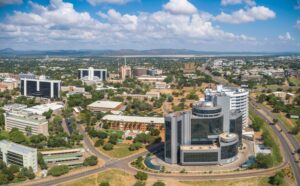
When it declared independence in 1966, Botswana was one of the poorest nations globally. Since then, it has grown to become the sixth richest country in Africa and run one of the fastest-growing economies worldwide. Its high GDP per capita is driven primarily by diamond mining, which constitutes the backbone of the economy and accounts for a large share of export revenue.
In addition, strategic economic policies, low corruption rates, and small population size have contributed to the country’s economic growth. Botswana’s high HIV/AIDS infection rate and overdependence on diamonds are two factors that may spell trouble for the country’s future.
Check out beautiful places to visit in Botswana below:

Top 10 poorest country in Africa 2025
7. Algeria – $6,950 (GDP per capita)
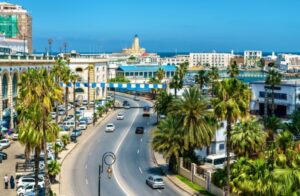
Oil and gas dominate Algeria’s economy, contributing nearly 25% of GDP and a significant portion of exports. The sector helped the country survive a COVID-19-induced recession in 2021.
The mining industry also supports the economy with phosphates and other minerals. Agriculture, primarily cereal production, and manufacturing, including steel and cement, further contribute to the country’s GDP. In the last four years, the government has been taking action to diversify the economy to create an enabling environment for businesses.
Check out beautiful places to visit in Algeria below:
8. South Africa – $6,700 (GDP per capita)
South Africa has one of the highest GDP per capita in Africa, estimated at around $6,700 in 2024. This figure reflects the country’s relatively advanced economy compared to many other African nations, though it also highlights disparities in wealth distribution.

9. Libya – $6,000 (GDP per capita)

Libya’s economy relies on its oil industry, which constitutes the vast majority of national income. Natural gas also plays a role, along with agriculture, where the country produces olives, wheat, dates, almonds, and cereals.
Efforts to further diversify the economy to industrial and agricultural development are ongoing but have yet to yield much success. Currently, the energy sector remains the main economic driver. The two civil wars in the last 20 years have contributed to unstable economic growth.
Check out beautiful places to visit in Libya below:

10. Tunisia – $3,800 (GDP per Capita)

Tunisia’s economy is supported by a well-developed agricultural sector, producing wheat, tomatoes, olives, watermelon, and onion. Mining for phosphates is also important, as well as a tourism industry driven by historical and coastal attractions. The manufacturing sector, particularly textiles, electronics, and mechanical goods, contributes significantly to economic output.
Tunisia has suffered a couple of setbacks in the last decade. In 2011, the country saw a revolution that significantly hampered its economic growth. Then, there was the COVID-19 pandemic in 2020, which slowed the GDP. Following the pandemic, Tunisia saw major growth through tourism.
Check out beautiful places to visit in Tunisia below:


